I desperately wanted to take advantage of the fading summer evening light, so Allison and Ian kindly met me at the
Olympic Sculpture Park for a shoot. Allison is
an artist extraordinaire and she's also our box office manager at
SAM. It was a little intimidating taking pictures of another photographer, but this couple is so laid back and fun they put me at ease.
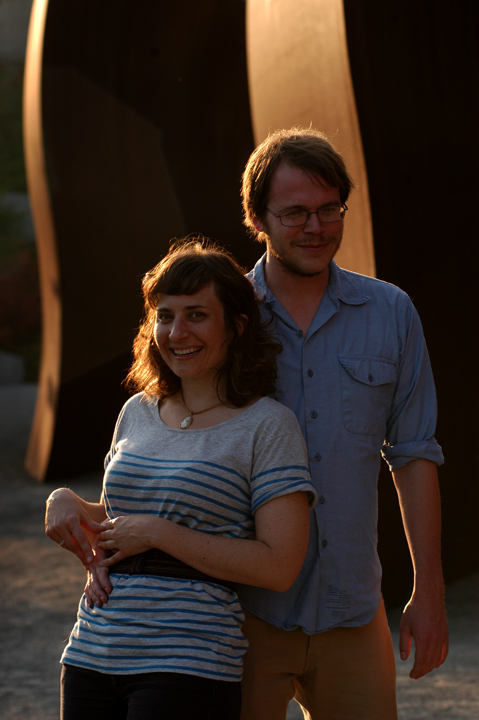
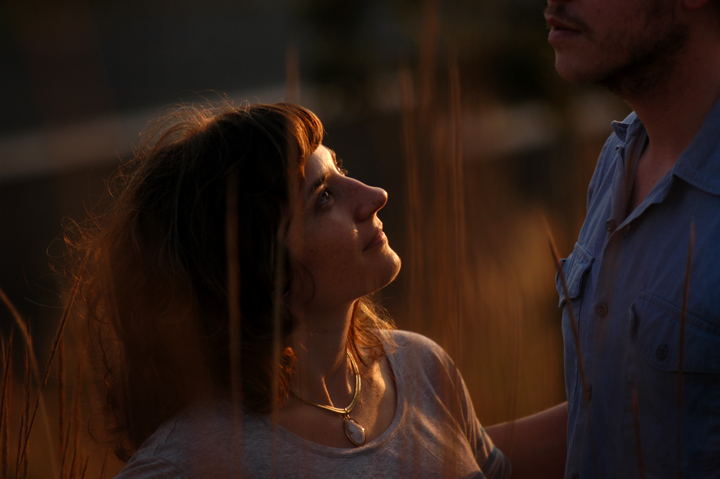
I've included some
information about the art from the SAM site below. Serra's work is especially nice to experience. Walking through, I always feel like I'm moving through a school of fish.
Richard Serra, Wake, 2004
For Richard Serra, space is a substance as tangible as sculpture. He uses materials and scale to alter perception and to engage the body, encouraging consciousness of our relation to space. The towering, curved-steel forms of Wakewere achieved with computer imaging and machines that manufacture ship hulls, including a demilitarized machine that once made French nuclear submarines. Wake is composed of five identical modules, each with two S-shaped sections positioned in inverted relation to one another—gently curving serpentines of convex and concave parts that suggest tidal waves or profiles of battleships. The surface of acid-washed, weatherproof steel reinforces this industrial effect. Wake’s powerful silhouette belies a complex configuration of parts; the whole cannot be known at once, but can only be experienced with movement and in time.
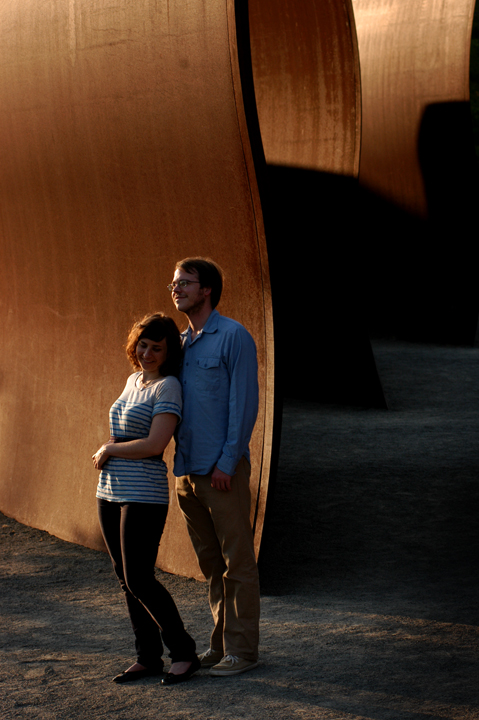
The breeze was giving Ian a styling new 'do.
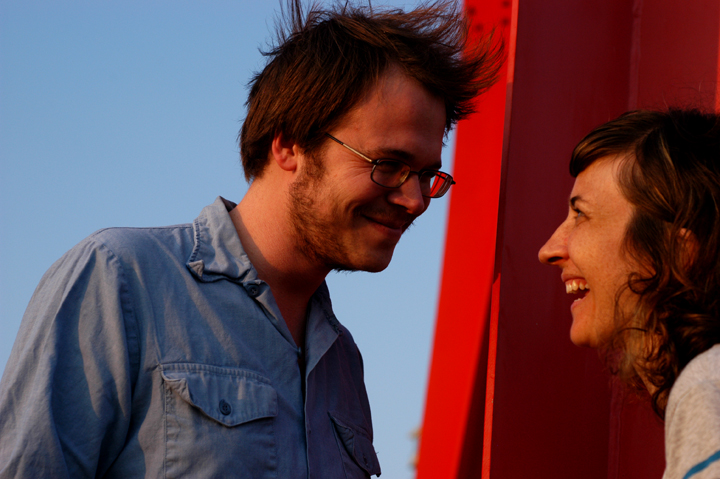
In July, the admissions department took a tour with the park's gardener. (Hands down, the best staff meeting yet!) Bobby described the challenge of keeping the grass looking lush, despite park's all-organic mandate and the hundreds of dogs relieving themselves at the park each day. Not easy. He does a fantastic job, though, and there was nary a suspicious brown circle in the grass at the amphitheater.
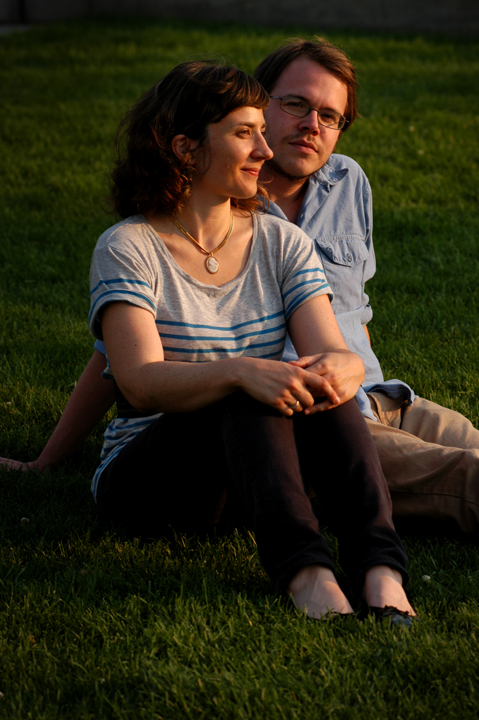
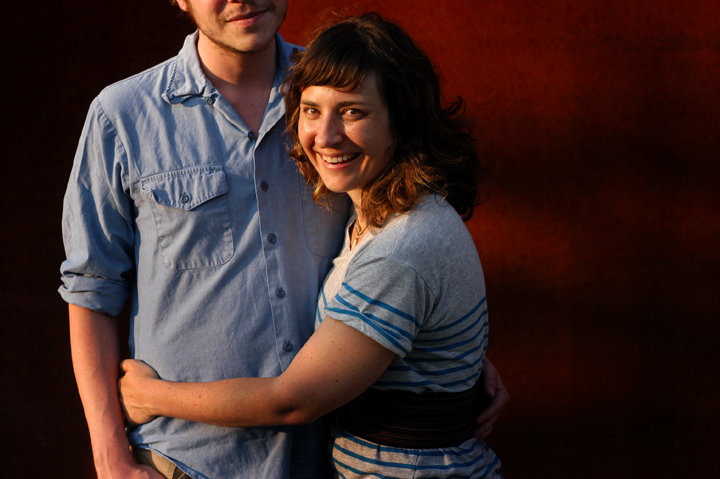
The tall di Suvero in the meadow is one of Allison's favorites.
Mark di Suvero, Bunyon’s Chess, 1965
The criss crossing steel beams of Mark di Suvero’s Bunyon’s Chess operate like broad brushstrokes drawn in space, a vocabulary that was radically new in sculpture at the time it was made. The artist’s first private commission, Bunyon’s Chess was created specifically for outdoor presentation in Seattle and makes wood a prominent element—a counterpoint to the structure of stainless steel. Di Suvero’s interest in sculpture’s kinetic qualities, inspired by Alexander Calder, and the artist’s use of found objects have remained constants in his career. His numerous public and private commissions, often monumental in scale, are sited worldwide.
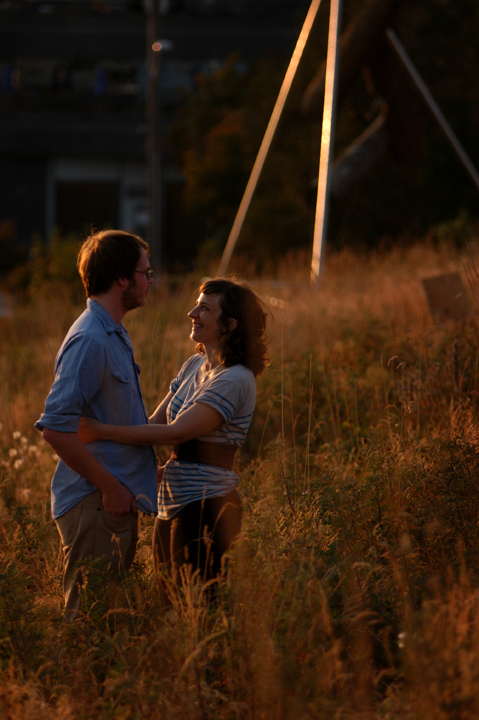
And here's the gazillion-dollar view. It's amazing that this prime piece of waterfront real estate is now a public sculpture park -- with free admission. The Calder's one of my favorites: it looked great when it stood in front of the Asian Art Museum and it looks just as lovely silhouetted against these Puget Sound sunsets.
Alexander Calder, Eagle, 1971
A third-generation American sculptor, Alexander Calder studied mechanical engineering before studying art. While in Paris in the 1920s and 30s, Calder developed two distinctive genres of sculpture: mobiles, or sculptures that move, and stabiles, which are still. Eagle, created at a time when Calder was recognized as one of the world’s greatest sculptors, reveals the artist’s distinctive combination of pragmatism and poetry. Architectural in its construction and scale, Eagle displays its curving wings, assertive stance and pointy beak in a form that is weightless, colorful and abstract.
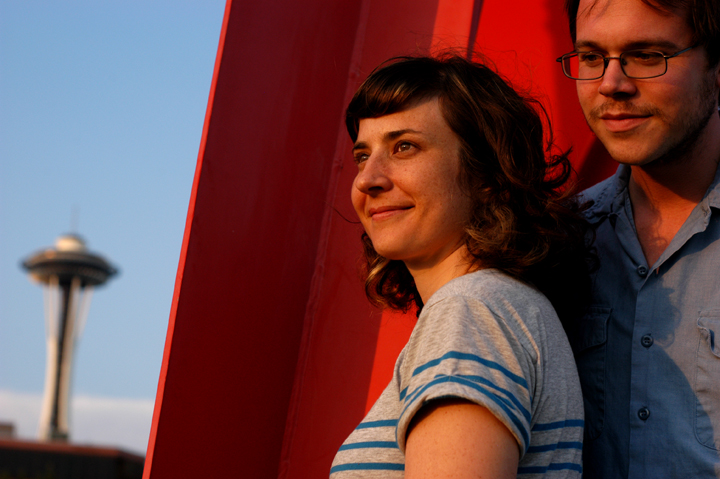
Thanks, Allison and Ian, for being such awesome models (after a long day at work, too). Hope you enjoy these pictures!

 I've included some information about the art from the SAM site below. Serra's work is especially nice to experience. Walking through, I always feel like I'm moving through a school of fish.
Richard Serra, Wake, 2004
I've included some information about the art from the SAM site below. Serra's work is especially nice to experience. Walking through, I always feel like I'm moving through a school of fish.
Richard Serra, Wake, 2004
 The breeze was giving Ian a styling new 'do.
The breeze was giving Ian a styling new 'do.
 In July, the admissions department took a tour with the park's gardener. (Hands down, the best staff meeting yet!) Bobby described the challenge of keeping the grass looking lush, despite park's all-organic mandate and the hundreds of dogs relieving themselves at the park each day. Not easy. He does a fantastic job, though, and there was nary a suspicious brown circle in the grass at the amphitheater.
In July, the admissions department took a tour with the park's gardener. (Hands down, the best staff meeting yet!) Bobby described the challenge of keeping the grass looking lush, despite park's all-organic mandate and the hundreds of dogs relieving themselves at the park each day. Not easy. He does a fantastic job, though, and there was nary a suspicious brown circle in the grass at the amphitheater.

 The tall di Suvero in the meadow is one of Allison's favorites.
Mark di Suvero, Bunyon’s Chess, 1965
The tall di Suvero in the meadow is one of Allison's favorites.
Mark di Suvero, Bunyon’s Chess, 1965
 And here's the gazillion-dollar view. It's amazing that this prime piece of waterfront real estate is now a public sculpture park -- with free admission. The Calder's one of my favorites: it looked great when it stood in front of the Asian Art Museum and it looks just as lovely silhouetted against these Puget Sound sunsets.
Alexander Calder, Eagle, 1971
And here's the gazillion-dollar view. It's amazing that this prime piece of waterfront real estate is now a public sculpture park -- with free admission. The Calder's one of my favorites: it looked great when it stood in front of the Asian Art Museum and it looks just as lovely silhouetted against these Puget Sound sunsets.
Alexander Calder, Eagle, 1971
 Thanks, Allison and Ian, for being such awesome models (after a long day at work, too). Hope you enjoy these pictures!
Thanks, Allison and Ian, for being such awesome models (after a long day at work, too). Hope you enjoy these pictures! 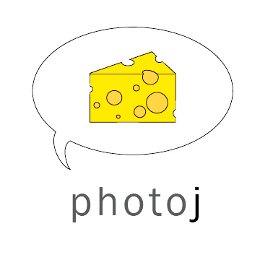
20 comments